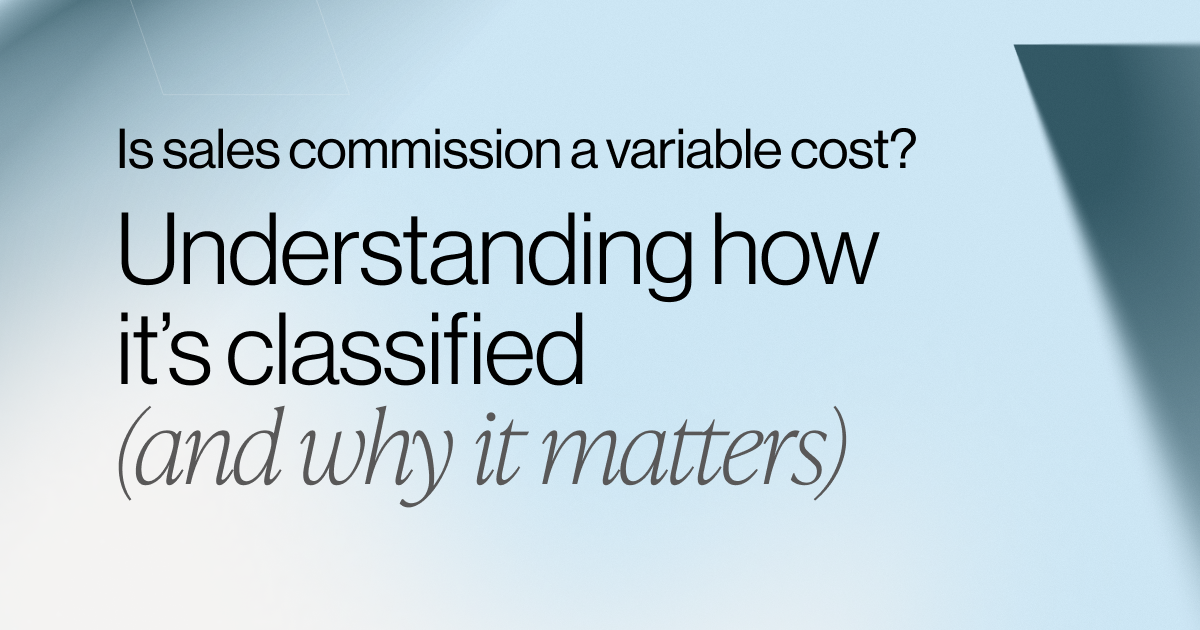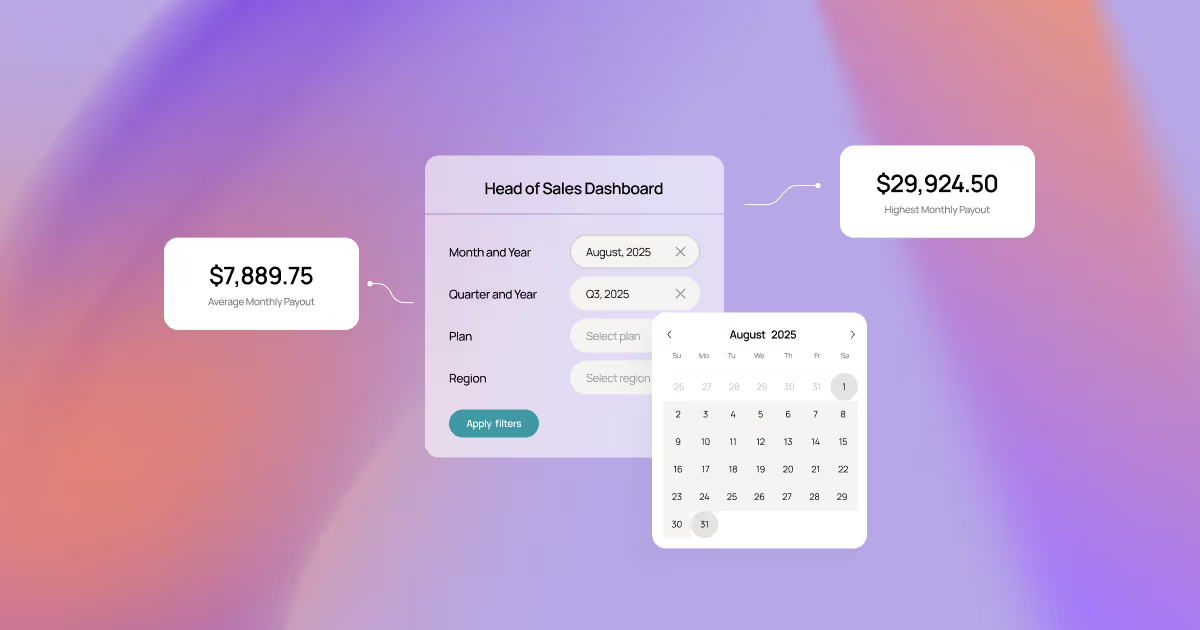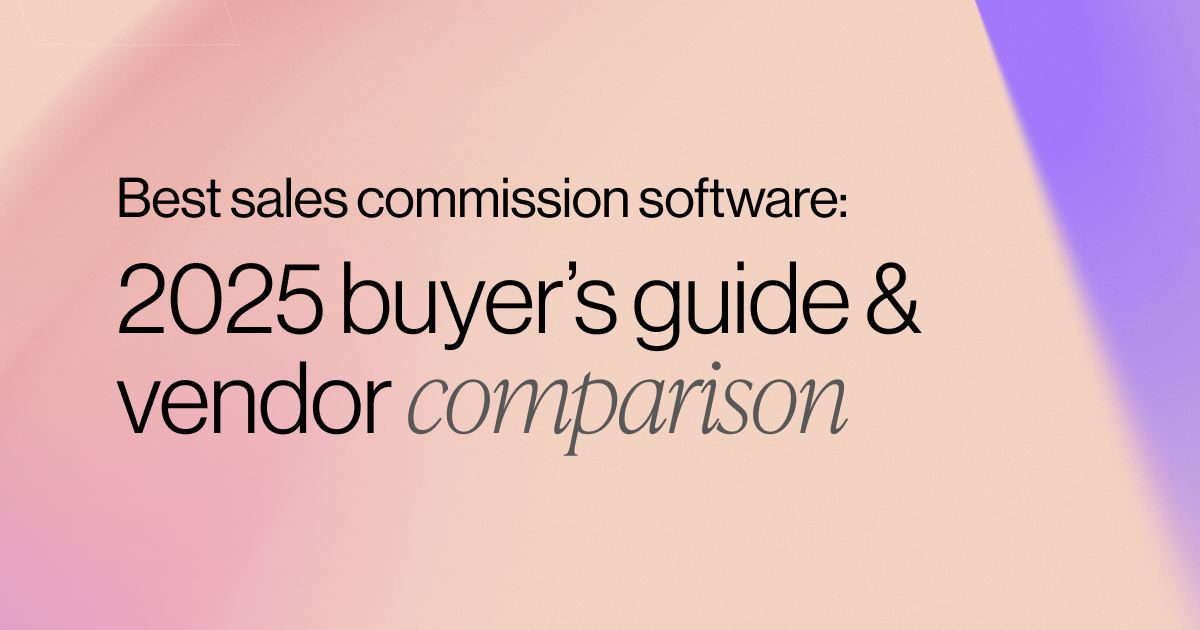How to Create a Sales Compensation Plan [Best Practices Infographic]
The sales team plays a pivotal role in ensuring healthy cash flow and hedging against customer churn.
If you’re in a business with many competitors, the difference between a motivated sales team and an unmotivated one can significantly impact your company’s ability to become the market leader.
A study by Gallup found that organizations with engaged, motivated employees reported 21% higher profitability.
Engaged, motivated employees reported 21% higher profitability at organizations.
Compensation plans are unequivocally a factor in an employee’s engagement and motivation. With this opportunity, business leaders should be thoughtful about how they structure these compensation packages for their sales teams.
What is a Sales Compensation Plan?
Employee compensation refers to the monetary amount of total income and retirement benefits a team member can make during their tenure.
A sales compensation structure is a business strategy designed to encourage high performance toward your bottom line.
By building a compensation policy that offers sales professionals a competitive employee salary with performance-based bonuses, you can:
- Attract top talent in prospective employees and support retention efforts.
- Encourage employee motivation and healthy competition.
- Improve employee performance against company targets.
There are two primary types of compensation: A combination of benefits and incentives.
- Direct compensation: This is any financial compensation, including hourly wage, weekly salary, additional commissions and bonus pay.
- Indirect compensation: Non-monetary perks and employee benefits on top of your total employee compensation — like paid time off, mental health benefits, dental care, and other fringe benefits.
Today, we're going to focus on direct compensation as part of the total compensation package.
Indirect Compensation: Types of Sales Compensation
While there are different types of sales compensation plans, direct compensation splits into two pay structures.
- Base Salary
- Variable Compensation
Base salary in employee compensation
An employee's base salary, or base pay, is the standard direct compensation received in their bimonthly paycheck.
Although your sales reps may be competitive and highly motivated, they’re likely to feel more loyal to a business that offers them the financial security of a healthy base salary.
A base salary also allows lesser known brands to stay competitive when recruiting top talent.
If compensation were solely based on volume of deals, sales professionals would likely always try to work for the biggest brand in the category where volume of deals is likely to be highest. This is why it's important to level the playing field with a reliable base pay structure.
Variable compensation
Variable compensation is what really allows businesses to motivate their sales teams to go above and beyond.
There are most commonly two types of variable pay in variable compensation— commission and quotas.
Commission in employee compensation
Commission is vital to any sales compensation package.
While there are different types of compensation for incentive pay, typically a percentage of a final sale or deal is awarded to the sales rep that closed the deal.
Percentages can vary across products such that sales reps are incentivized to sell products with higher profit margins.
Benefits of commission in total compensation
- Simple, easy to track, and offers a direct incentive for success.
- Incentivizes sales of new products or products in new markets.
- Low administration costs.
- Makes sense for fast, transactional selling.
Drawbacks of commission in total compensation
- Sales performance can be inconsistent and difficult to predict.
- It isn’t a sophisticated tool for influencing sales activities.
- Does not encourage long-term account building.
- Selling is transactional and commoditized.
- Territories can be unbalanced in terms of earning opportunities.
In order to reach the total reward target in any compensation program, employees will align their job performance against target quotas.
Compensation package quotas
A quota is a time-based sales target for an individual sales rep or a team.
Quotas can be measured monthly, quarterly, or annually and based on revenue, total sales volume, or percentage-based growth.
Your sales rep or team might receive a flat figure, or a percentage of their total revenue as a reward for hitting their target.
Benefits of compensation program quotas
By attaching your employee compensation plan with direct quotas, you can clearly outline financial incentives, and see the following benefits:
- Provide your compensation plan with a more sophisticated system for shaping sales behaviors.
- Effectively reward account management and long-term sales activities.
- Encourage collaborative, team-based selling activities as part of a people-first culture.
- Handle complex and mismatched sales territories more fairly with equity compensation.
- More easily predict overall sales performance to inform your compensation strategy.
Drawbacks of compensation program quotas
As with any aspect of a compensation plan, quotas can come with a few drawbacks.
- Lack of urgency and pressure for reps, especially if a target becomes impossible.
- They can seem complex and confusing.
- Sales reps can feel distanced from their goals and rewards.
A few ways to prevent the potential disadvantages of quotas in your compensation strategy are to:
- Ensure that your compensation philosophy is feasible and scalable.
- Clearly articulate your bonus structure and compensation plan to current team members and prospective employees in a formal document.
- Include a combination of long-term incentives and incremental bonus payments.
Sales Compensation Planning Metrics
In order to create a compensation plan to attract top talent and further your business strategy, sales teams need to be clear about their target metrics.
The following metrics are integral to ensuring that you're aligning employee performance with employer goals.
- Sales revenue: The monetary amount a sales team brings in through sales. It can determine the overall compensation for the team and individual salespeople.
- Gross margin: The amount of money a company makes on each sale after accounting for the cost of producing or acquiring the goods sold. Think profit margin. It’s often used to gauge the profitability of the sales team.
- Sales activity: This is a sales team's “daily hustle” — the number of sales-related activities by individual and team. Activity could include sales calls made, meetings booked, demos given, and follow-up emails sent.
- Sales pipeline: This is how sales leaders track the number and value of opportunities — deals in various stages of the sales process. The sales pipeline means managers can better predict potential revenue, use insights to set goals, determine compensation, and plan for the future. Analyzing pipeline also means sales leaders can identify areas where the team may struggle, such as lead generation or closing techniques.
- Customer acquisition cost: The amount of money a sales team spends to attract and win new customers – marketing and sales expenses (advertising, promotions, email outreach, various software, etc.). By tracking the customer acquisition cost, sales managers can see how efficient and effective the marketing and sales teams are at attracting new customers. This information can be used to set goals, improve sales strategies, and determine compensation.
Sales commission metrics track sales teams' performance and determine compensation. Here are a few of the more common metrics to follow.
How to Create a Sales Compensation Plan
Now that we've outlined what to keep in mind as you build your financial compensation package, let's break down how to build an employee compensation plan.
Identify your compensation philosophy
For anyone who’s managed and administered a sales compensation program — that is, ensuring plan participants’ payouts are calculated promptly and accurately — you know all too well that commission operations cover so much more than calculating payouts and letting the payroll team know before their deadline.
First, when drafting your employee compensation plan, ask yourself these 3 key questions:
- Does my plan incentivize high performance across the team?
- Does my plan ensure that reps will be financially secure even if they have a tough month or quarter? (A baseline level of guaranteed stability will ensure that reps are focused on exceeding expectations rather than worrying about making rent.)
- Does my plan encourage deals that are aligned with the long-term strategy of the firm?
Set sales targets
Like sales quotas, sales targets are specific, measurable, and time-bound goals used to:
- Guide the sales process.
- Track progress against the company's strategy.
- Measure the success of sales strategies and company performance.
After setting the total sales targets, sales professionals will set individual goals across varying periods of time. These could be daily, weekly, monthly, quarterly, or annually.
Set On-Target Earnings
On-Target Earnings (OTE) equal the total compensation earned by a sales rep when they meet (or exceed) their sales quota.
OTE includes the employee's base pay and any variable compensation such as commissions or performance-based bonus pay
Typically, OTE is calculated as the base pay + on-target variable (OTV). OTV is the total reward an employer will pay to the salesperson when they meet or exceed targets.
Note: The Quota time period (e.g., “is quota annual?“) can vary, but the OTE portion will match the quota. So, quarterly quota = quarterly OTE; annual quota = annual OTE.
Create your compensation package
Make sure to align your total compensation package to the business and go-to-market (GTM) strategy. The alignment process begins with asking these critical questions:
- What customer segments do you want to grow? By how much?
- Which products are strategic to your business?
- How does each sales role contribute to the strategy?
- What behaviors do we need to motivate at every stage in our sales process for each role?
- Is it about revenue or profitability or both?
- Is it about first booking or retention and upsells or both?
- What is the correlation between efforts, results, and strategic value in each segment with a particular product mix?
- When does the organization get the true value of the business sold?
- What type of business is detrimental to the business?
To achieve alignment, each role’s plan needs to be based on factors they control and influence. Here are four recommendations for creating high alignment with your compensation package:
Include more downstream factors for a fair compensation strategy
Company performance depends on more than total sales. Align your total reward plan with factors that impact the companieslong-term goals.
In many types of compensation plans today, company's are measuring total compensation from a variety of factors, including:
- Payments
- Margins
- Strategic mix
- Profitability of business sold
Often this means that BDRs are not just compensated for their activity, but also for the success factors downstream, such as the number of Stage 1 and Stage 2 deals they are part of and the value of the deals generated by them that close.
Sales executives are not just compensated on bookings but on invoicing, payments, and profitability of the business they bring in.
Incorporate gates, qualifiers, and thresholds into your comp plan
Ensure the value of your sales to properly incentivize your comp plan.
For example, a salesperson only receives the acceleration if they meet some base level of certain product goals.
You can also withhold the total reward until after a certain level of performance is achieved. After all, it is a sales compensation plan that is supposed to have high leverage both on the downside and the upside.
Experiment with goal setting and measurement periods
Clarify the objectives of all performance-based roles, and further, the responsibilities of each role within the go-to-market motion
Take into consideration your constraints, such as results that are hard to measure
Evaluate different approaches based on how well they align with objectives, responsibilities, and constraints
There are different types of total commission structures for different businesses and industries.
Sales Compensation Planning Best Practices [Infographic]
Sales compensation is more complex than ever.
Market trends, rapid shifts in the sales process, and increasingly complex product offerings and services can make designing effective plans a difficult task.
Don’t worry; we’ve got your back! Use these four best practices to design a competitive compensation plan.
1. Stick to no more than two or three performance measures in your compensation system.
Why?: You don't want to ask your sales team to perform too many tasks that don't generate real incentives.
Tip: Select performance measures that support key objectives of the type of employee role (e.g., introducing new product lines, expanding into new segments). By doing this, you create incentives that drive desired behaviors and outcomes.
2. Spend time modeling commission plans to find out what works best for each team.
Why?: Commission modeling lets you test all aspects of the plan— including SPIFs, accelerators, and clawbacks— against topline numbers so you can build and iterate your compensation policy with more confidence.
Tip: Use a modeling engine to test various scenarios that can come up in the sales process to ensure the plan meets changing business needs (top-down) while giving flexibility to managers to assign fair quotas (bottom-up).
3. Pay levels and mix should be influenced by the company's performance evaluation measures.
Why?: Pay levels and mix are typically benchmarked to industry standards and role objectives. Still, you must be able to prove that employees are performing up to their job description.
Tip: Suppose individual performance can be accurately, objectively and immediately tracked. In that case, it makes much more sense to put more pay at risk than if job responsibilities fluctuate and individual influence on sales results is harder to measure.
4. Get your sales managers on board early in the process.
Why?: Sales managers play a crucial role in training and communicating with the broader sales organization about performance, incentives, and compensation management. Their support is critical to the success of the compensation structure rollout.
Tip: Create a communication checklist that all sales managers can refer to when communicating new compensation plans or plan changes.

Building Your Compensation Strategy
Using the above building blocks as a guide, spend time with your business leaders and sales team to draft a few possible compensation plans that make sense for your team.
If you’re interested in learning how CaptivateIQ can improve the dynamics of your sales team, we'd love to help.
.svg)








